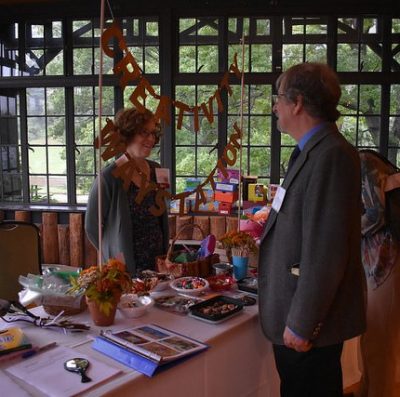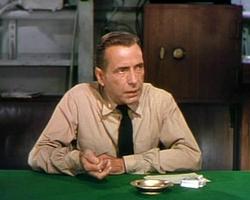
The last month has been a busy time for conferences. In this post and subsequent ones, I wish to present information from these conferences to people who were unable to attend them but may be interested in the sessions. My particular focus will be on examples of storytelling. I am interested in how history organizations are reaching out into their communities including sectors of the community which may not have a longstanding record of involvement in such organizations.
The Greater Hudson Heritage Network (GHHN) conference Flipping the Narrative: Voices Unheard, Stories Untold (9/25/18) consisted of two major components. One part was “Awards for Excellence” while the other was presentations. I apologize in advance for not including everybody in this blog. The full slate of information can be found at the GHHN website.
Some awards and presentations involved active storytelling or performances.
“In Her Words: A Women’s History Lecture and Performance”
Historic Huguenot Street
New Paltz (Ulster)
This education award is in recognition of “In Her Words: A Women’s History Lecture and Performance” at Historic Huguenot Street. On March 10, 2018, Historic Huguenot Street held a performance telling the stories of eight influential women who helped shape local history over the last four centuries. Through monologues and music derived from historical research and in collaboration with local historians and scholars, the audience was given a glimpse these women’s dreams, fears, flaws, and challenges during momentous times in the region’s history.
According to the program brochure I picked up from the display table, the figures ranged from the 1600s to the 1900s. Combined, they covered much of the history of the community until recent times. The research into the individual figures in the performance included contacting the Stockbridge-Munsee Historical Committee and Library/Museum. When I wrote about the Stockbridge-Munsee conference earlier this year, I noted the dramatic presentation of the words of the Stockbridge Indians by the actual descendants or the original authors. In many communities there always is the possibility that descendants of the people portrayed still live there.
Life Downstairs at Staatsburgh
Maria Reynolds, PhD, Staatsburgh State Historic Site
Staatsburgh State Historic Site is currently in the process of bringing the story of the mansion’s servants from the margins to the center. New research has uncovered photos and details previously unknown about the lives of many servants working at Staatsburgh for the Mills family. This research has informed existing programming: tours with a focus on the similarities between the mansion and Downton Abbey and a participation tour that includes a table setting activity and a ‘hiring a servant’ exercise. The research is also the impetus for a new exhibit with interactive elements, a new tour and other programming – a continued effort to bring these lives to the forefront, both expanding and enriching interpretation at Staatsburgh.
Staging History
Michelle Mavigliano, Schuyler Mansion State Historic Site
In an effort to narrate historical events from the perspective of the enslaved black population living in 18th century Albany, Schuyler Mansion State Historic Site has developed two programs that give voice and agency to men and women usually denied both. This presentation will explore the research and contrivance behind creating “The Accused” and “To Be So Confin’d,” two programs that use museum theatre and first–person narration as the interpretive tools to tell these stories.
We are a storytelling species so it behooves history organizations to tell stories and not just point to objects (unless there is a story associated with them). Every community has stories to tell. My recommendation is for history organizations to identify the stories that define the community and to perform them. Here is an excellent opportunity to involve the local high school drama club and to connect the students with their own community. There needs to be more than an elementary school field trip to bring local history and students together. On a national level, we have seen the impact of Hamilton, the Musical. What are the stories of your community?
Another area of expression involves people and peoples whose voices have not always been heard or have been heard in a distorted manner.
“When Slavery Died Hard: The Forgotten History of Ulster County and the Shawangunk Mountain Region”
Cragsmoor Historical Society
Cragsmoor (Ulster)
This education award is in recognition of the documentary “Where Slavery Died Hard…” grows from their community’s efforts to reconsider its history and the history of the Shawangunk Region. While researching for The Cragsmoor Historical Journal, archaeologists/historic preservation consultants Wendy E. Harris and Arnold Pickman discovered that in 1820, one of Cragsmoor’s early families contained an enslaved child. The phrase “where slavery died hard,” was bestowed upon Ulster County as a result of its resistance to abolition during the late eighteenth and early nineteenth centuries. This documentary hopes to contribute to a body of knowledge that will verify the significance of the African-American presence in this region.
According to a handout at the display table, the Cragsmoor Historical Society intends to distribute the video gratis to schools and other cultural and education organizations. It also will be posted to the Society’s website. The public debut of the video is today, October 20.
Serving Their Country: African Americans and America’s Wars
Matthew Thorenz, Moffat Library of Washingtonville
From before the Revolutionary War to World War One, African Americans have played a vital role in serving in our nation’s armed forces. Bringing the service of those who served under extreme prejudice during these conflicts can help us better understand the complex political, social, and cultural worlds in which they lived, while highlighting a group of individuals who have been marginalized to a degree in public programming. Learn how original research contributed to two thought provoking analysis of African American service members in the Hudson Valley at New Windsor Cantonment, 1782-1783, and on the Western Front of World War One in 1918.
Considering Native American Stereotypes in the 21st Century
Colette Lemmon, Iroquois Indian Museum
This presentation will focus on the impetus, development, and elements of the Iroquois Museum’s current exhibition, “Tonto, Teepees, & Totem Poles: Considering Native American Stereotypes in the 21st Century”. The exhibit includes materials from popular culture and the media as well as provocative responses by Indigenous artists around the issue of stereotyping. The presentation will also highlight the participatory activities that were developed to engage our visitors with this topic and their (sometimes surprising) outcomes.
The participating artists were mainly Mohawk and secondarily Haudenosaunee except for the Tuscarora. It is a pity that all the museums of these Indian nations across the center of the state do not collaborate in creating programs. At least the individual artists from the various Indian Nations can work together.
New Voices from Old Schenectady
Michael G. Diana, Schenectady County Historical Society
Built in 1705 and continuously occupied until 2001, the Mabee Farm is uniquely able to provide a broad historical cross-section of the Mohawk River Valley. Until recently, the general tour focused primarily on the architecture of the farm house as well as Jan Mabee, the patriarch who built it. A new narrative is grounded in characters and stories that have long been overlooked. Prominently featured are Mabee women, such as Annetje and Catrina, whose Mohawk and Dutch heritage gave them considerable influence in Schenectady’s colonial society. The stories of Jack and Cato, drawn from original documents, tell how two of the enslaved people who lived at the farm exercised their agency in bold and surprising ways. By restoring and restaging the house, Schenectady County Historical Society seeks to tell the story of everyone who lived there and, by extension, the story of so many generations of farmers and travelers who made the Mohawk Valley their home.
The Dutch legacy in New York was addressed in several of the conferences I attended over the past few weeks. What is important to note is that back then the Dutch were Dutch and the Mohawk were Mohawk – they had not yet lost their individuality and become subsumed into the politically correct designations in vogue today.
A final type of reaching out is directly to the schools themselves.
“Museum Studies Partnership for Learning”
Hudson River Museum
Yonkers (Westchester)
This project award is in recognition of the interdisciplinary educational curriculum, “Museum Studies Partnership for Learning” that included workshops, museum visits, and classroom lessons as part of an in-depth collaborative relationship with Yonkers Public Schools’ Museum School 25. The curriculum seeks to exercise students’ creativity while engaging them in projects that would enhance critical thinking skills and help them make connections between art, science, and history.
Since this partnership was an award and not a presentation, the program itself was not described at the conference. According to the brochure, 9 pre-k to 2nd grade classes participated. The curriculum drew on the river itself and concluded with an exhibition at the Museum of the student’s work. Landscape very much is part of human history. Nature sets the stage, human write the stories…and alter the landscape.
A fitting conclusion to the conference would be for all the participants to break bread together. For that, we will have to wait for
Interpreting Reher’s Bakery: Multicultural Rondout Then and Now
Sarah Litvin, Reher Center/Jewish Federation of Ulster County
to be fully operational.





